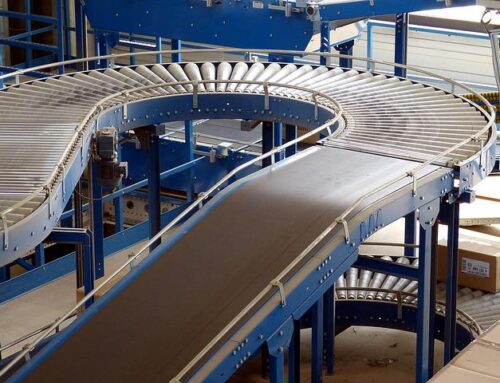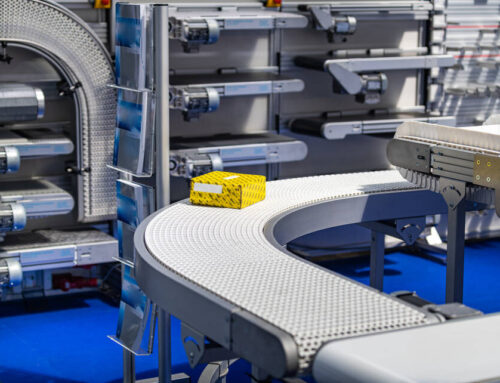Modern manufacturing facilities are always looking to incorporate elements that help them increase productivity and convenience. These elements range from various mechanical systems which elevate workforce operations by providing support which minimises manual labour and maximises efficiency.
Among these systems, conveyor systems are one of the most widely incorporated machinery with the responsibility to facilitate the smooth movement of goods across different sections of a facility safely and effectively. Conveyor systems are available in different varieties, each with specific characteristics offering their level of convenience.
In this post, we will take a look at the different types of conveyor systems and understand their benefits and applications.
Understanding Different Types of Conveyor Systems
- Belt Conveyors
One of the most commonly used conveyor systems in the FMCG and packaging industry, Conveyor Belt systems are known for their versatility and durability. Belt conveyors consist of a continuous loop of a durable belt stretched between two pulleys that transports materials in different directions, incline or decline alike. Their durability is particularly effective in transporting large amounts of materials at a customised speed according to the warehouse operator.
- Compact Corner Conveyors
Facilities operating in a limited space, can benefit from utilising a Compact Corner Conveyor belt which is engineered to navigate through corners and tight turns. Compact corner conveyors are designed to maximise the available space and improve transport efficiency within the facility making them ideal for FMCG plants specialling where the layout requires sharp turns and close quarters.
- Pallet Conveyors
Pallet Conveyors are the most durable and robust form of conveyor systems designed to handle heavy containers or pallets. They can withstand a significant bulk of the equipment that they carry which can be beneficial in warehouses, manufacturing plants and distribution centres. Pallet conveyors enhance load-handling capabilities and reduce the risk of injury associated with manual handling of heavy items.
- Slat Conveyors
Salt conveyors are different from the rest of conveyor systems due to their design which consists of a series of slats attached to a chain, creating a flat surface that transports items along a production line. Industries such as bottling plants, canning facilities, or heavy appliance manufacturing often use slat conveyors because they can handle irregular-shaped products and provide a stable platform for assembly and processing tasks.
- Flexible Roller Conveyors
While the conveyor systems we have discussed so far remain intact in one place, Flexible Roller Conveyors offer a more flexible positioning for facilities where the transport paths may be changed frequently. They are highly adaptable and their flexibility makes them ideal for loading and unloading areas, or in shipping and receiving departments where space configurations can differ according to the facility layout. The ability to quickly reshape the conveyor path without the need for significant setup changes saves time and enhances workflow efficiency.
- Gravity Roller Conveyors
As the name suggests, Gravity Roller conveyors use the natural gravity force to move items along on a declining transport path. Gravity Roller conveyors are best suited for handling items with a flat bottom, such as trays, boxes, or bins. They are commonly used in warehouses and assembly lines with minimal intervention, thus offering a reliable and simple system with low-maintenance solution.
- Powered Roller Conveyors
Powered roller conveyors are motor-powered conveyors that allow flexible control over the speed and movement of goods and are particularly useful for handling heavy loads or for applications for transporting goods over larger distances at consistent speeds. These conveyors can come equipped with sensors to stop the product flow, making them highly effective for manufacturing processes where precise timing and positioning are critical. These systems are often used in large-scale distribution centres, automated assembly lines, and areas where reducing manual handling is a priority.
Streamline Your Workflow Operations With LVP Conveyor Systems
If you are based in Dublin and are looking to install a new conveyor system or upgrade an existing one in your manufacturing plant, then we invite you to check out our products and services at LVP Conveyor Systems. Located in Dublin, we offer complete Conveyor systems solutions from providing different systems from Conveyor belt systems to Flexible roller conveyors, we also help install them at your premises. Consult with our team to learn what type of conveyor system is best suited for your operations and how to improve your efficiency and save on manual labour costs. Choose us to streamline your productivity with our reliable and convenient conveyor solutions.






